
Asahi Pentax H2 and Yashica Pentamatic ’35’. Both cameras were on dealer’s shelves during the spring of 1960. The H2 was introduced in the autumn of 1959. Production began on the Pentamatic in December 1959 and was available for purchase in the US by June 1960.
The Asahi Pentax H2 and the Yashica Pentamatic ’35’ were direct competitors during the early 1960s. Yashica was well know for their high quality but low cost twin-lens reflex (TLR) cameras and were making a name for themselves with quality 8mm movie cameras and 35mm rangefinder and viewfinder cameras. The Pentax H2 was the next step for the Asahi Optical Company to take after the successes of the earlier Asahiflex, the first Pentax (1957) and then the Pentax K (1958). For Yashica, this was their first 35mm single-lens reflex (SLR) camera.
Approximately 41,000 Pentax models were sold before the H2 came to market by late 1959. We don’t know how many of the H2 models were made between October 1959 and June 1960 when the Pentamatic was first available for sale. A ‘guesstimate’ would be around 5,000 to 7,000 but no hard evidence exists to say how accurate that guess is. We do know that by May of 1960, Yashica had produced around 4,000 units. Our May dated Pentamatic has a production serial number of 3,354. One would think that Asahi had a tremendous advantage over Yashica just by the sheer number of SLRs produced before Yashica even got started.
Which camera was better? If we use longevity as the primary test, the Pentax H2 (S2) and the entire run of this Pentax series blows the Pentamatic away! The original Pentamatic ’35’, the Pentamatic II and the Pentamatic S models were basically gone by 1962 and by our estimate, only 25,000 units were built (the original Pentamatic ’35’ accounts for about 20,000 of that total alone). By some estimates, the Pentax H2/S2 sold 130,000 units between 1959 to 1963. If you take a look at eBay and Yahoo Japan auctions you’ll likely find at least a dozen or so H2/S2 cameras available for bids at any given time. Pentamatics seldom appear the model II and the model S are virtually non existent.
What’s different? A lot! First how about weight…
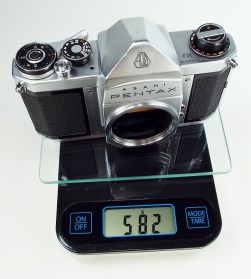
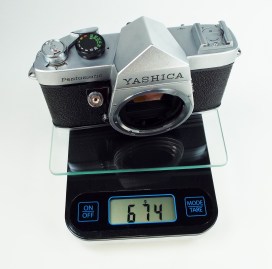
But weight doesn’t equal quality… or does it? It is of our opinion that Yashica wanted to appeal to two types of customers with the Pentamatic. The first would be the serious amateur photographer and the other would be budding professionals. At around $159 in the US, it was within a comfortable price range for both types of customers. The Yashica designers went “over the top” with the build… bigger and heavier had to be better and professionals would seriously consider the Pentamatic as it would stand up to the demands of rugged and repeated use. We agree with the designers. The Pentamatic’s weight does give the impression of quality… the fit and finish are pleasing too. That’s not to say that the Pentax feels or looks cheap or that it’s not designed well. We love the look of the Pentax and so did countless others.
Why all the extra weight and bulk for the Pentamatic? To handle the weight of the unique bayonet mounting for the Auto Yashinon lens was more than likely the reason. The M42 screw mounting for the Pentax meant that the body could be made smaller and lighter. Why Yashica decided to go with its own mount will never be known. At the time of the Pentamatic’s release, hundreds of lenses with the universal M42 mount were available. Compare that to the maybe three Pentamatic bayonet lenses available. This single reason, in our opinion, had to have turned away thousands of potential buyers. Yashica’s bayonet mount is actually very well designed and the mounting of the lenses was quick and secure with less than a one quarter turn. M42 screw mount lenses take about 3-5 revolutions to secure the lens.
The lens mounting flange on the Pentamatic body is 57mm… on the H2 it’s only 49mm. The overall dimensions of the two bodies are rather telling… the base plates are almost the same… 139mm for the H2 and 141mm for the Yashica. The height of the body (base plate to top plate) is 72mm for the Pentamatic and 67mm for the Pentax. Overall height from the base plate to the highest point of the pentaprism is interestingly 90mm for both cameras.
Other differences and features…

Notice that the rewind knob (camera’s left side) on the H2 is easily accessible and has a more “standard” design then the Yashica’s which is recessed below the cold shoe. An advantage on the Pentamatic is that it came with a built-in shoe for a flash or light meter where the H2 required a shoe to be mounted to the eyepiece and rested on the pentaprism (which almost always left a dent). The film speed setting dial on the Pentax is located on the left side under the rewind knob. The Pentamatic’s was on the back center of the film door.
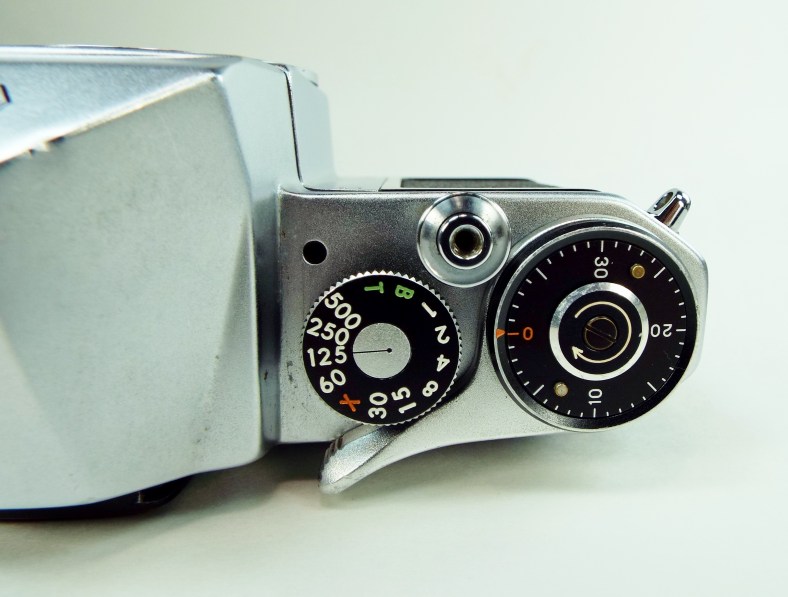
The right side of the H2 top plate. The exposure counter did not reset itself when the camera back was opened. Top shutter speed is 1/500th of a second. Shutter button is top mounted (traditional location).
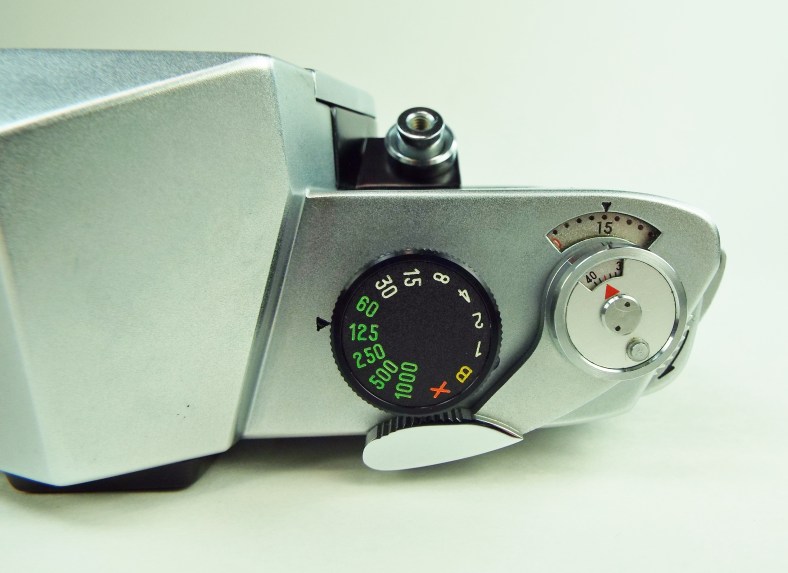
The right side of the Pentamatic top plate. The smaller dial (with the red pointer) was set to show the amount of exposures on the film. The other small indicator (pointing to 15) was an automatic exposure counter. It does not reset itself when the film door is opened. The shutter speed dial indicates that the maximum speed of the shutter could be 1/1000th of a second. Shutter button was front mounted at a 45 degree angle… not a traditional location but one that feels correct to us.
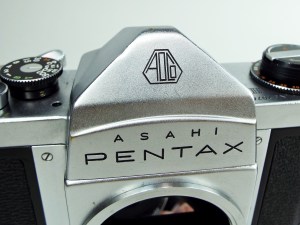
Asahi Optical Company logo and name.

Angular design of the Pentamatic pentaprism.
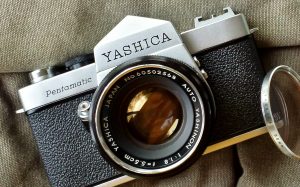
Chris – in a way, the Pentamatic did continue. My Yashica Reflex 35, their first M42 camera, is very similar to the Pentamatic, and appears to be built on the same body. Its weight is within a few grams of the Pentamatic’s weight.
LikeLiked by 1 person
Good point John. I’ll have to take another look at that body again. Thanks for bringing it up.
LikeLike
Thanks for the history lesson. I enjoyed the read.
LikeLiked by 1 person
Thank you John!
LikeLike